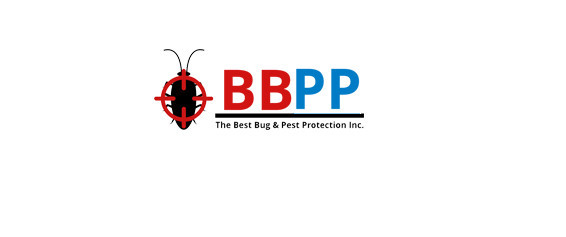views
Introduction to NAS Storage
As our digital footprint continues to expand, the need for efficient and reliable storage solutions becomes increasingly critical. For tech enthusiasts and content creators, managing vast amounts of data is a daily challenge. Enter NAS storage—a powerful and versatile solution that can streamline data management and enhance productivity.
But what is NAS storage? NAS, or Network Attached Storage, is a type of dedicated file storage device that provides local area network (LAN) users with centralized and consolidated disk storage through standard Ethernet connections. Unlike traditional external hard drives, NAS storage offers advanced functionalities like data backup, remote access, and media streaming, making it an invaluable tool for anyone serious about data management.
Benefits of NAS Storage
1. Data Backup
One of the most significant advantages of NAS storage is its ability to serve as a reliable backup solution. With NAS, you can automatically back up your files from multiple devices, ensuring that your data is safe and easily recoverable in case of hardware failure or accidental deletion. This is particularly beneficial for content creators who generate large volumes of data and need a secure way to store it.
2. Remote Access
NAS storage enables remote access to your files from anywhere in the world, provided you have an internet connection. This feature is perfect for tech enthusiasts who travel frequently or content creators who collaborate with teams across different locations. Remote access ensures that you are never far from your essential files, no matter where you are.
3. Media Streaming
For those who love to consume and create media, NAS storage offers seamless media streaming capabilities. You can store your entire media library—movies, music, photos, and more—on your NAS device and stream it directly to your smart TV, computer, or mobile device. This eliminates the need for multiple copies of media files and provides a centralized hub for all your entertainment needs.
How to Set Up NAS Storage?
Setting up NAS storage might seem intimidating at first, but with the right guidance, it can be a straightforward process. Here’s a step-by-step guide to help you get started:
Step 1: Choose the Right NAS Device
Before you can set up NAS storage, you need to choose a NAS device that meets your needs. Consider factors like storage capacity, number of bays (for hard drives), processing power, and additional features such as RAID support.
Step 2: Install Hard Drives
Once you have your NAS device, the next step is to install the hard drives. Follow the manufacturer’s instructions to securely insert the drives into the NAS bays. Make sure the drives are compatible with your NAS device.
Step 3: Connect to Your Network
After installing the hard drives, connect your NAS device to your router using an Ethernet cable. This will allow your NAS to communicate with other devices on your local network.
Step 4: Set Up the NAS Software
Most NAS devices come with proprietary software that you need to install on your computer. This software will guide you through the initial setup process, including creating user accounts, setting up shared folders, and configuring network settings.
Step 5: Configure Backup and Remote Access
Finally, configure the backup settings to automatically back up your files to the NAS device. Additionally, set up remote access to allow you to access your files from outside your local network. This usually involves creating an account with the NAS manufacturer’s cloud service.
Creative Uses of NAS Storage
NAS storage is a versatile tool that can be used in various creative ways. Here are some ideas for tech enthusiasts and content creators:
- Photography
Photographers can use NAS storage to organize and store their high-resolution images. With ample storage space and the ability to create shared folders, photographers can easily manage their photo libraries and ensure their work is backed up and accessible from anywhere.
- Videography
For videographers, NAS storage offers a centralized location to store raw footage and finished projects. The high-speed data transfer capabilities of NAS devices make it easy to edit directly from the NAS, saving time and improving workflow efficiency.
- File Organization
Content creators often deal with numerous files, from documents to multimedia. NAS storage allows for efficient file organization with the ability to create custom folder structures and apply advanced search features. This makes it easier to locate and manage files, no matter how extensive your data collection is.
Security and Maintenance Tips
To ensure your NAS system remains secure and performs optimally, consider the following tips:
- Security Tips
- Enable Encryption: Encrypt your data to protect it from unauthorized access.
- User Permissions: Set up user accounts with specific permissions to control access to your files.
- Regular Updates: Keep the NAS firmware and software up to date to protect against vulnerabilities.
- Firewall and Antivirus: Use firewall and antivirus software to add an extra layer of security.
- Maintenance Tips
- Regular Backups: Schedule regular backups to ensure your data is always up-to-date.
- Monitor Drive Health: Use NAS software tools to monitor the health of your hard drives and replace them as needed.
- Temperature Control: Ensure your NAS is in a well-ventilated area to prevent overheating.
- Clean Dust: Periodically clean your NAS storage solutions device to prevent dust buildup, which can affect performance.
Conclusion
In a world where data is king, NAS storage stands out as a crucial tool for tech enthusiasts and content creators alike. From offering reliable data backup and remote access to enabling seamless media streaming and file organization, NAS provides a comprehensive solution to modern data management challenges.
By understanding the benefits, learning how to set up a NAS device, exploring creative uses, and implementing security and maintenance best practices, you can unlock the full potential of NAS storage and enhance your digital lifestyle.
Ready to take your data management to the next level? Dive into the world of NAS storage and experience the difference it can make in your personal and professional life.











